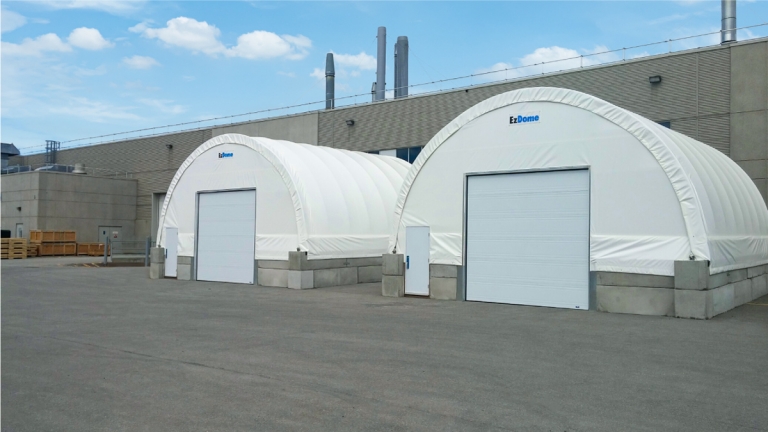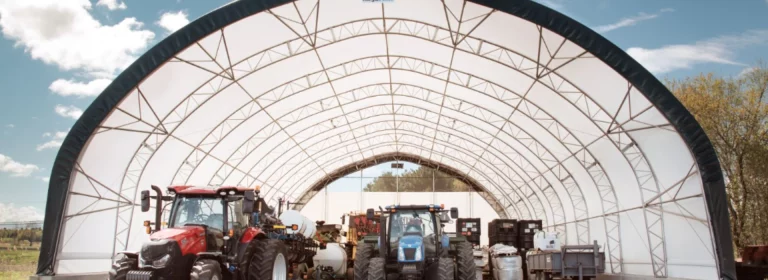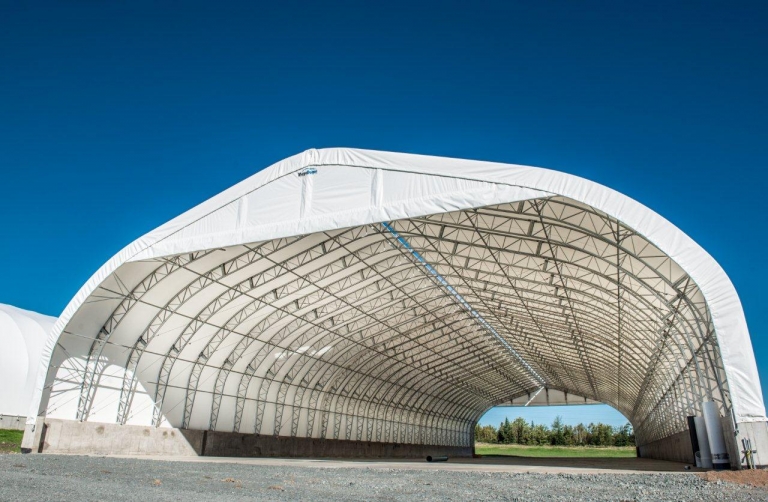In the evolving landscape of construction and architecture, an impressive 75% of new industrial facilities in the past year have opted for alternative, sustainable fabric building solutions, with coverall buildings leading the charge. These versatile structures, exemplified by the renowned MegaDome® brand, are redefining cost-efficiency, durability, and environmental responsibility in the building industry. This article delves into the essence of coverall buildings, focusing on the pivotal aspects of cost, benefits, customization, and sustainability, guiding you through the decision-making process for your next project.
Understanding Coverall Buildings
Definition and Design Coverall buildings, characterized by their tensile fabric over a steel frame, offer a blend of durability, flexibility, and efficiency unmatched by traditional construction. The design principles behind these structures, including the use of advanced materials like those found in MegaDome® buildings, ensure a balance between strength and adaptability.
Versatility and Applications From agricultural storage facilities to sports arenas and industrial warehouses, the applications of coverall buildings are vast. Their design allows for large, unobstructed interior spaces, making them ideal for a wide range of uses. This section explores the myriad ways in which these buildings can serve different industries, underscoring their adaptability and utility.
The Cost Factors of Coverall Buildings
Base Prices and Size Variations The cost of a coverall building is influenced by several factors, including size, materials, and design complexity. This segment provides a foundational understanding of pricing, offering readers a starting point for budget considerations.
Customization Costs Customization is a significant factor in the final cost of a coverall building. Options for doors, windows, insulation, and specific design features can tailor a building to precise needs but will affect the overall investment. This part of the article outlines the cost implications of customizing your MegaDome® or other coverall building structures.
Installation and Labor Costs The simplicity of installing coverall buildings significantly reduces labor costs compared to traditional construction. However, factors such as foundation preparation and the complexity of custom features can influence the overall cost. This section breaks down the installation process and its impact on the project budget.
Benefits Over Traditional Structures
Economic Advantages Coverall buildings offer remarkable economic benefits, including lower initial investment, reduced maintenance costs, and energy efficiency. This comparison with traditional structures highlights the long-term savings and value proposition of choosing a MegaDome® building.
Durability and Maintenance The durability of coverall buildings is a testament to their design and materials, capable of withstanding extreme weather conditions with minimal maintenance. This part compares the lifespan and upkeep requirements to those of conventional buildings, emphasizing the advantages of fabric structures.
Environmental Impact Sustainability is at the forefront of the construction industry’s evolution, and coverall buildings are leading the way. This section discusses the eco-friendly aspects of these structures, from the recyclable materials to the energy-efficient designs of MegaDome® buildings.
Customization and Installation
Customization Options The flexibility in customizing coverall buildings allows them to meet specific needs and preferences. This detailed exploration of available options showcases the diversity of applications and the creative potential of these structures.
Installation Process Rapid and efficient, the installation of a coverall building is significantly faster than that of traditional constructions. This overview of the installation steps, timeline, and required preparations provides potential owners with a clear expectation of the process.
Weather Resistance and Longevity
Facing the Elements Engineered to endure, coverall buildings are exceptionally resistant to weather extremes, from heavy snow to high winds. This section delves into the technology and design features that ensure these buildings can withstand the elements year after year.
Longevity and Care Maintaining a coverall building to ensure its longevity is straightforward and cost-effective. This part offers maintenance tips and best practices for extending the life of your MegaDome® or other coverall structure, ensuring optimal performance and durability.
Making the Investment
Cost-Benefit Analysis The decision to invest in a coverall building is often driven by a cost-benefit analysis. This concluding section evaluates the upfront costs against the long-term benefits, including reduced maintenance, energy savings, and durability, providing a compelling argument for their value.
Financing Options Understanding the financial aspects of purchasing a coverall building, including potential financing options, can ease the decision-making process. This brief overview offers insight into making the investment more accessible and manageable.
In summary, coverall buildings, particularly those under the MegaDome® brand, represent a forward-thinking choice for a wide range of applications. Their cost-efficiency, durability, and environmental benefits, combined with the flexibility in design and customization, make them an attractive option for anyone looking to invest in a high-quality, sustainable building solution. Whether you’re planning an agricultural storage facility, an industrial warehouse, or a recreational space, the adaptability and efficiency of coverall buildings are poised to meet and exceed your expectations.


